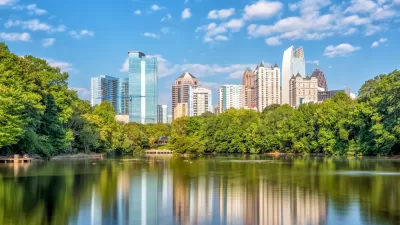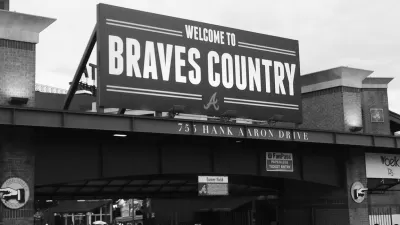Metropolitan regions are the most important factors in supporting prosperous economies. For national economies to succeed, metropolitan regions must succeed, according to this article from the Brookings Institution.
"Though our economic development policies don't reflect it, America doesn't really possess a national economy, or even a collection of 50 state economies. Instead, America's long-term prosperity stands or falls on the more local prosperity of its 363 distinct, varied, clustered, and interlinked metropolitan economies, dominated by the 100 largest metros-many of which cross county and state jurisdictions and incorporate multiple city centers, suburbs, exurbs, and downtowns in a way that the old hub-and-spoke model of urban geography never did. In that sense, America is quite literally a "MetroNation," utterly dependent on the success of its metropolitan hubs."
"From the hundreds of square miles that constitute contemporary London to the sprawling Brazilian city-states of Sao Paulo and Rio, metros are the new norm in global economic development, shaped by twenty-first-century forces of globalization, innovation, and cultural diversity."
FULL STORY: Miracle Metros

Manufactured Crisis: Losing the Nation’s Largest Source of Unsubsidized Affordable Housing
Manufactured housing communities have long been an affordable housing option for millions of people living in the U.S., but that affordability is disappearing rapidly. How did we get here?

Americans May Be Stuck — But Why?
Americans are moving a lot less than they once did, and that is a problem. While Yoni Applebaum, in his highly-publicized article Stuck, gets the reasons badly wrong, it's still important to ask: why are we moving so much less than before?

Using Old Oil and Gas Wells for Green Energy Storage
Penn State researchers have found that repurposing abandoned oil and gas wells for geothermal-assisted compressed-air energy storage can boost efficiency, reduce environmental risks, and support clean energy and job transitions.

Greening Oakland’s School Grounds
With help from community partners like the Trust for Public Land, Oakland Unified School District is turning barren, asphalt-covered schoolyards into vibrant, green spaces that support outdoor learning, play, and student well-being.

California Governor Suspends CEQA Reviews for Utilities in Fire Areas
Utility restoration efforts in areas affected by the January wildfires in Los Angeles will be exempt from environmental regulations to speed up the rebuilding of essential infrastructure.

Native American Communities Prepare to Lead on Environmental Stewardship
In the face of federal threats to public lands and conservation efforts, indigenous groups continue to model nature-centered conservation efforts.
Urban Design for Planners 1: Software Tools
This six-course series explores essential urban design concepts using open source software and equips planners with the tools they need to participate fully in the urban design process.
Planning for Universal Design
Learn the tools for implementing Universal Design in planning regulations.
Heyer Gruel & Associates PA
City of Moreno Valley
Institute for Housing and Urban Development Studies (IHS)
City of Grandview
Harvard GSD Executive Education
Salt Lake City
NYU Wagner Graduate School of Public Service
City of Cambridge, Maryland





























